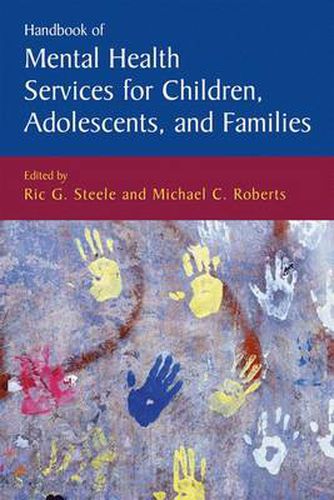Readings Newsletter
Become a Readings Member to make your shopping experience even easier.
Sign in or sign up for free!
You’re not far away from qualifying for FREE standard shipping within Australia
You’ve qualified for FREE standard shipping within Australia
The cart is loading…






This title is printed to order. This book may have been self-published. If so, we cannot guarantee the quality of the content. In the main most books will have gone through the editing process however some may not. We therefore suggest that you be aware of this before ordering this book. If in doubt check either the author or publisher’s details as we are unable to accept any returns unless they are faulty. Please contact us if you have any questions.
Social, economic, and theoretical changes in the current clinical landscape are adding up to profound changes in children’s services–not the least of which is an expanded need for mental health services. Professionals–novices and veteran clinicians alike–wonder how to fill this demand in the present climate of turf wars, reorganizations, and budget cuts. The Handbook of Mental Health Services for Children, Adolescents, and Families cogently analyzes the issues and provides the answers, from current issues and emerging therapeutic trends to new avenues of treatment. Thoroughly researches and documented buy industry experts, it presents the widest range of mental health services available to youth and their families.
Areas of coverage include:
Specific modalities in service delivery, including in-patient and day treatment facilities, pediatric hospitals, and community mental health centers as well as rural, school, and primary care settings.
Services tailored to special populations, such as adolescent sex offenders, homeless children and their families, children with chronic illness, oppositional teens, abuse situations, and children exposed to traumatic events.
Details on preventative programs for child abuse, substance abuse, STD’s, and gang violence.
An in-depth examination of the latest developments in children’s services, including therapeutic camping and Internet-based treatment.
Approaches and methods for evaluating service organization, delivery, and efficacy.
Few areas of mental health care demonstrate the need for complementary services as much as child and family practice does. With this need firmly in mind, the Handbook encourages creativity and collaboration within practice settings and across agencies. For clinicians, administrators, school practitioners, and advanced-level students, this is a reference certain to have lasting impact on the field.
$9.00 standard shipping within Australia
FREE standard shipping within Australia for orders over $100.00
Express & International shipping calculated at checkout
This title is printed to order. This book may have been self-published. If so, we cannot guarantee the quality of the content. In the main most books will have gone through the editing process however some may not. We therefore suggest that you be aware of this before ordering this book. If in doubt check either the author or publisher’s details as we are unable to accept any returns unless they are faulty. Please contact us if you have any questions.
Social, economic, and theoretical changes in the current clinical landscape are adding up to profound changes in children’s services–not the least of which is an expanded need for mental health services. Professionals–novices and veteran clinicians alike–wonder how to fill this demand in the present climate of turf wars, reorganizations, and budget cuts. The Handbook of Mental Health Services for Children, Adolescents, and Families cogently analyzes the issues and provides the answers, from current issues and emerging therapeutic trends to new avenues of treatment. Thoroughly researches and documented buy industry experts, it presents the widest range of mental health services available to youth and their families.
Areas of coverage include:
Specific modalities in service delivery, including in-patient and day treatment facilities, pediatric hospitals, and community mental health centers as well as rural, school, and primary care settings.
Services tailored to special populations, such as adolescent sex offenders, homeless children and their families, children with chronic illness, oppositional teens, abuse situations, and children exposed to traumatic events.
Details on preventative programs for child abuse, substance abuse, STD’s, and gang violence.
An in-depth examination of the latest developments in children’s services, including therapeutic camping and Internet-based treatment.
Approaches and methods for evaluating service organization, delivery, and efficacy.
Few areas of mental health care demonstrate the need for complementary services as much as child and family practice does. With this need firmly in mind, the Handbook encourages creativity and collaboration within practice settings and across agencies. For clinicians, administrators, school practitioners, and advanced-level students, this is a reference certain to have lasting impact on the field.